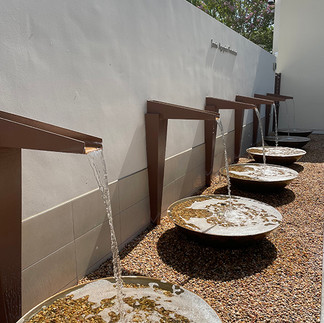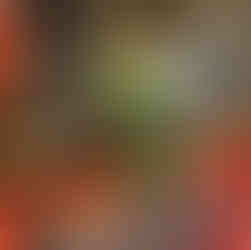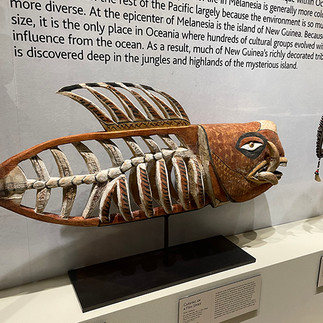
Bowers Museum opened in 1936 as a city-run museum devoted to the history of Orange County. The Bower's Family donated the land that the museum currently sits on; the Bowers were citrus growers and land developers. The Bowers lived on this land in a Victorian style house that was torn down to build the museum. The original small courtyard-shaped museum is how I knew the museum when growing up in the area. It had only a few rooms filled with the treasures of Southern California. Two architects, Frank Lansdown and W. Horace Austin designed the original hacienda Spanish-style building. Both architects were known for various buildings around Orange County and were contemporaries of Frank Lloyd Wright.The museum opened nineteen years before Disneyland and nine years before the end of World War II and the mass movement to the suburbs that would become Orange County. In the mid-1980s, the city began to think about reinventing the museum and reimagined how it could present a comprehensive few of the world and take on priceless works of art from around the world. The reconstruction began in 1989 and went through 1992.
In 1995 my husband and I were married in the museum's courtyard, accompanied by a harp player. It was an idyllic setting that transports you to a family owned Spanish hacienda surrounded by lush vegetation. There is a grand staircase that wraps around the right side of the courtyard. If you enter through the original main entrance, the courtyard unfolds as you breach the gate. As you walk past the square, you will view a small outside courtyard with seating for Tangana. Tangana is the on-campus restaurant. The main entrance is just past this area, and you may see a fabric sign advertising the latest temporary exhibit. You walk through the glass doors, and the counter to purchase tickets will be right in your sightline.
When the museum reopened in 1992, it was eight and a half times bigger than the original space. It was unrecognizable to me, and I was able to see the museum in a whole new light. The history of Southern California is allocated to the older part of the mission in a diminished capacity. However, there was still a representation of the first people who inhabited California, the history of the Spanish Missions along the coast of California, and the artwork that inspired the first generation of trained artists that created romantic views of the coast and hills of Southern California. The museum added to this collection in the new exhibit hall spaces the arts of the various cultures of different world regions. There is a heavy influence of Polynesian and Asian cultures being represented, faithful to those living in Southern California.
Bowers Museum was once again transformed in 2011, when they decided to add a wing to the back of the current space, which created another entrance with a small outdoor sculpture garden surrounded on one side by a fountain wall. This space is lush and tranquil, with olive trees popping through the landscape. There is also a new auditorium and additional galleries for permanent and visiting exhibits.
They have a on-site light fare luncheon restaurant, Tangata. It is usually serving sandwiches and salads. You may also see a couple of choices that you would see on a dinner menu and Asian influenced selections. It is a very relaxing area off to the side that controls the sound that interferes with your meal. Noise can be an issue at many museums because of the acrostics of the high ceilings and the way the sound bounces through the open halls and large foyers on all the hard surfaces. Tangata has a lower ceiling and is tucked to the side at the main entrance. There is also an area to sit outside and enjoy the beautiful California weather. It is adjacent to the courtyard where the kids can stretch their legs and be themselves.

During our visit, we were able to experience most of the museum in two hours. I think you could experience all of it within three hours if you are also visiting the temporary special exhibit. There is a lot to take in, but each exhibit has a few unique pieces that stand out and grab your attention. Each component helps bring you closer to their culture and helps explain the depth of history in these regions. Most of the permanent collections are grouped in smaller rooms filled with information, and the traveling shows are in expansive rooms that allow you to appreciate each piece individually. It is okay if you don't see absolutely everything, and sometimes it is best to find the elements that are the highlights of each permanent or traveling exhibit and focus on those unique items. I like to take the time to study one piece in a collection and imagine why it is there and what importance it brings to the whole.

The current show Treasures in Gold and Jade: Masterworks from Taiwan exemplifies this experience and runs through the summer of 2021. There are almost too many fascinating pieces that hold the imagination. I slowly prosed most of the show to find the artwork that sang to me. What grabs my eye is a small detail of an ant climbing a stem or a beautiful moth that looks like it is about to take flight into the Netherland. The elements of their artistry are represented by the lace-like, whimsical feeling of the way they manipulate their material. The creativity explored and presented inspires one to take a harsh volcanic metal or rough impermeable rock and change them structurally.
The first artist, Huang Fu, spins jade into flowing leaping insects transcending their plane and twisted beautifully abstract leaves that look like the elements are slowly dissolving them. These leave-like forms are representing autumn. I've never seen jade pierce through a weightless atmosphere as it climbed through the sky in the form of a vine. The other artist, Wu Ching, reinvents the perception of gold and turns it into a source of reflection. This reflection is felt inwardly as a symbolic representation of time passing and growing. It also accurately represents light in its most sincere purest form as it bounces light through the room into the darkness until the walls engulf it. The piece that transcends the collection is a tree created of brass and gold. A mass of vines come up from the floor and entwine themselves to create a tree with delicate leaves glittering at the edge of their branches. The leaves float as if they will escape the confines of their permanent placement. The leaves reach out, trying to take on a new life beyond the tree and be a part of something greater than themselves. Little do they know they have already accomplished this goal.
Another exhibit that occupies a much smaller space is Gemstone Carving: The Masterworks of Harold Van Pelt, and it seems to be a habitual resident moving forward. It has inhabited the space since 2017, and it is something to behold. I understand why it held the staff's curiosity, and they have kept it in its current location. Harold Van Pelt takes quartz and carves it into wafer-thin shapes that defy gravity. He uses the inherent strength of these minerals to showcase his skill. He takes a solid stone and turns it into a translucent vase, egg, or chalice that are as delicate as pedals. This talent would be enough to earn him space and accolades, but I think the piece that defines the exhibit is his carved skull with an articulated jawbone.
A more unexpected exhibit, especially the name is Spirits and Headhunters: Art of the Pacific Islands. This reminds me of an exhibition that is on par with the Field Museum of Natural History in Chicago. The Field's Museum has exhibits on the second floor that were very similar to the style of presentation that I found in this permanent exhibit. It was great to see the development and depth of this collection that represented a wide variety of cultures found throughout the Pacific Islands. The room closest to the door but only accessible if you walk through the whole exhibit has the most effective representation of pieces that towered over the visitors and caught your imagination. The music that flowed through this space inspired the dancing that represented these cultures' oral history and traditions.
One of the spaces representing the region's past and what I experienced at the museum as a child was the First Californians collection. These were the cultures I learned about in school and read about in books like "Isle of the Blue Dolphins." These types of spaces bring that culture rushing forward to the forefront of the world we live in today. It is hard to imagine a time without our roads and permanent dwellings that keep us safe from the environment. It recalls a time when disease, malnutrition, and struggle against the elements were knocking at your door. It also shares how we may be separated by time and space, but they are the same as us. Same intelligence and feelings, same ability to develop, grow, love, and learn. We are them, and they are us.
The Bowers Museum has a little bit for everyone and is a great way to start your family's adventure at an art and cultural museum. It is small enough for an afternoon visit and not overwhelming. If you need a smaller space that is less crowded, head to the original portion of the museum with the permanent collection. If you need a bigger space to spread your wings, head to the newer exhibit halls by the new entrance and parking lot. There are also some generous outside areas where you can stretch your legs and do a couple of somersaults. Yep, that needs to happen sometime.
You can view past exhibits on their website and upcoming exhibits. These shows range from art from modern and past cultures in the Asia Pacific region, individuals that influenced the culture of the Americas, and the decorative arts that draped the royal families around the world. Even if you don't visit the special exhibit, there is plenty to see that will fill your afternoon. Check out this gem in Orange County.
Bowers Museum has a low entrance fee, but adding a special exhibit can almost double in price.
The entrance fee is free if you belong to a local museum associated with NARM (North American Reciprocal Museum Association). It is always worth looking into joining a few associations if you plan to travel the country or even if you are visiting family in another city.

Bowers Museum
2002 North Main Street
Santa Ana, California 92706
Tel 714.567.3600
Hours: Tuesday - Sunday 10:00 am - 4:00 pm
Closed on: Mondays, Fourth of July, Thanksgiving, Christmas, New Year's Day
Age: third grade and up
There are no hands-on activities in the museum, so make sure your children will be okay with keeping their hands at their sides or bring something to keep their hands occupied. There is also no food or drinks allowed in the museum, so make time to step outside for snacks. If your child has sensory issues, make sure to bring your headphones because there can be sudden loud noises. However, most of the time, it is pretty quiet with underlying music and hollow ricocheted noises. Older adults are the majority of the visitors at the museum.
Images from: Two Weeks a Yea, Bower's Museum, and OC Register






























































Comments